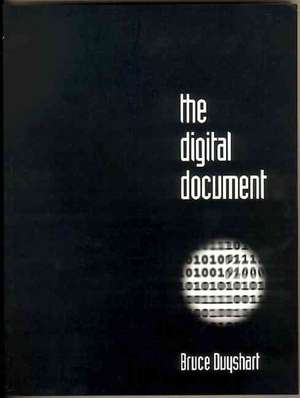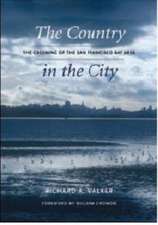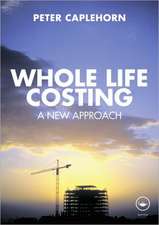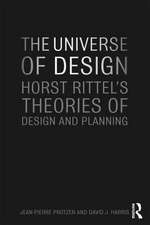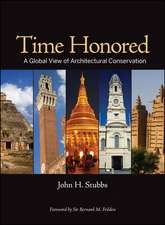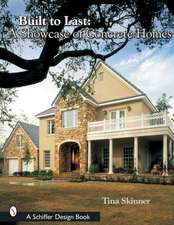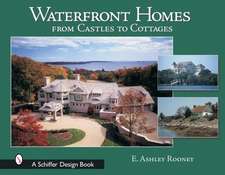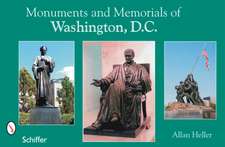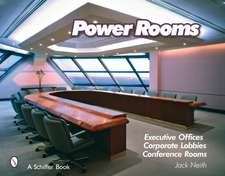The Digital Document
Autor Bruce Duysharten Limba Engleză Paperback – 12 ian 1998
The Digital Document provides an extensive background to the issues and technologies surrounding this very important topic. It examines a technical subject in an insightful manner that is neither intimidating nor confusing, even to the novice computer user. By introducing the subject through a series of preliminary reviews of current practices and essential computing technologies, the reader is able to better appreciate the benefits and capabilities of a wide range of digital document types. This book explores the role of documents in a professional practice, examines the components, capabilities, viability, and use of digital documents in the design and construction industry, and identifies and explains many of the
standards in use today.
In order to facilitate a better understanding of digital document technologies, a number of essential reviews are provided including:
- the definition and purpose of a document
- how documents are typically used by design professionals
- the nature of the digital document environment
- the data types which make up digital documents
The Digital Document is an essential reference for the architect, engineer or design professional that wants to find out more about effective communication in the digital workplace.
Bruce Duyshart is an IT Project Manager with Lend Lease Corporation and specialises in the development and implementation of digital media and information management technologies on design and construction projects. He holds a Masters degree in Architecture and is also an academic associate of the Faculty of Architecture, Building and Planning at the University of Melbourne. He has written numerous papers on emerging technologies in the architecture, engineering and construction industry, and has developed Internet web sites for the Royal Australian Institute of Architects and Architecture Media.
Preț: 391.08 lei
Preț vechi: 763.58 lei
-49% Nou
Puncte Express: 587
Preț estimativ în valută:
74.83€ • 78.13$ • 61.93£
74.83€ • 78.13$ • 61.93£
Carte tipărită la comandă
Livrare economică 29 martie-12 aprilie
Preluare comenzi: 021 569.72.76
Specificații
ISBN-13: 9780750636025
ISBN-10: 0750636025
Pagini: 232
Dimensiuni: 189 x 246 x 14 mm
Greutate: 0.45 kg
Ediția:1
Editura: Taylor & Francis
Colecția Routledge
Locul publicării:Oxford, United Kingdom
ISBN-10: 0750636025
Pagini: 232
Dimensiuni: 189 x 246 x 14 mm
Greutate: 0.45 kg
Ediția:1
Editura: Taylor & Francis
Colecția Routledge
Locul publicării:Oxford, United Kingdom
Public țintă
Professional Practice & DevelopmentCuprins
Chapter 1 A New Medium for Documents; Chapter 2 The Document; Chapter 3 Document Use in the Construction Industry; Chapter 4 The Digital Document Environment; Chapter 5 Digital Data Types; Chapter 6 Digital Document Types; Chapter 7 Applying Digital Documents; Chapter 8 Professional Opportunities;
Recenzii
'It is an excellent piece of work, and it can be read with profit by anyone interested in the effect of computer and telecommunication technology on architectural practice.'
William J. Mitchell, Professor of Architecture and Media Arts and Sciences and Dean of the School of Architecture and Planning at the Massachusetts Institute of Technology.
'If you are about to embark on computerising your office or if you are interested in making the most of the information you hold you should read this book.'
World Architecture
'The document has played a vital role in architecture and design.'
Building Design
'This book explores the role of documents in a professional practice.'
Book News
William J. Mitchell, Professor of Architecture and Media Arts and Sciences and Dean of the School of Architecture and Planning at the Massachusetts Institute of Technology.
'If you are about to embark on computerising your office or if you are interested in making the most of the information you hold you should read this book.'
World Architecture
'The document has played a vital role in architecture and design.'
Building Design
'This book explores the role of documents in a professional practice.'
Book News
Descriere
Documents, such as drawings, memos and specifications, form an essential function in the design and construction industry. Throughout the lifecycle of a built asset, starting from an initial design idea, right through to a final built form and its ongoing management, thousands, even millions of documents can be used to convey various forms of information to a range of interested parties. In many ways, therefore, the success of a design, or construction-based company, relies upon an understanding of the use of documents, as well as the technologies and techniques that are used to create them.
The Digital Document provides an extensive background to the issues and technologies surrounding this very important topic. It examines a technical subject in an insightful manner that is neither intimidating nor confusing, even to the novice computer user. By introducing the subject through a series of preliminary reviews of current practices and essential computing technologies, the reader is able to better appreciate the benefits and capabilities of a wide range of digital document types. This book explores the role of documents in a professional practice, examines the components, capabilities, viability, and use of digital documents in the design and construction industry, and identifies and explains many of the
standards in use today.
In order to facilitate a better understanding of digital document technologies, a number of essential reviews are provided including:
- the definition and purpose of a document
- how documents are typically used by design professionals
- the nature of the digital document environment
- the data types which make up digital documents
The Digital Document is an essential reference for the architect, engineer or design professional that wants to find out more about effective communication in the digital workplace.
Bruce Duyshart is an IT Project Manager with Lend Lease Corporation and specialises in the development and implementation of digital media and information management technologies on design and construction projects. He holds a Masters degree in Architecture and is also an academic associate of the Faculty of Architecture, Building and Planning at the University of Melbourne. He has written numerous papers on emerging technologies in the architecture, engineering and construction industry, and has developed Internet web sites for the Royal Australian Institute of Architects and Architecture Media.
The Digital Document provides an extensive background to the issues and technologies surrounding this very important topic. It examines a technical subject in an insightful manner that is neither intimidating nor confusing, even to the novice computer user. By introducing the subject through a series of preliminary reviews of current practices and essential computing technologies, the reader is able to better appreciate the benefits and capabilities of a wide range of digital document types. This book explores the role of documents in a professional practice, examines the components, capabilities, viability, and use of digital documents in the design and construction industry, and identifies and explains many of the
standards in use today.
In order to facilitate a better understanding of digital document technologies, a number of essential reviews are provided including:
- the definition and purpose of a document
- how documents are typically used by design professionals
- the nature of the digital document environment
- the data types which make up digital documents
The Digital Document is an essential reference for the architect, engineer or design professional that wants to find out more about effective communication in the digital workplace.
Bruce Duyshart is an IT Project Manager with Lend Lease Corporation and specialises in the development and implementation of digital media and information management technologies on design and construction projects. He holds a Masters degree in Architecture and is also an academic associate of the Faculty of Architecture, Building and Planning at the University of Melbourne. He has written numerous papers on emerging technologies in the architecture, engineering and construction industry, and has developed Internet web sites for the Royal Australian Institute of Architects and Architecture Media.
